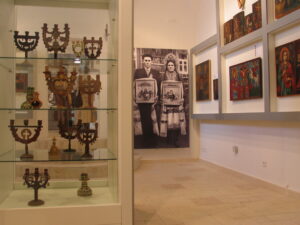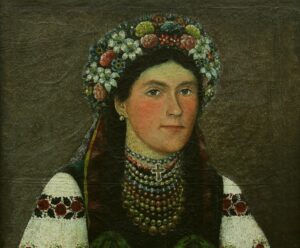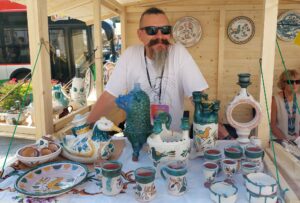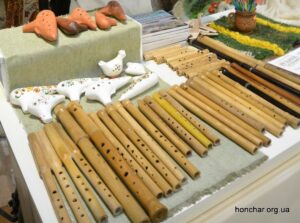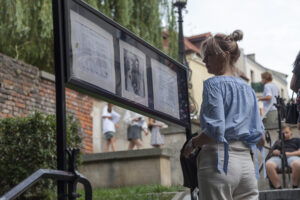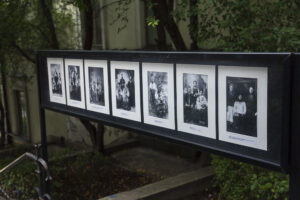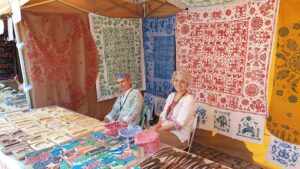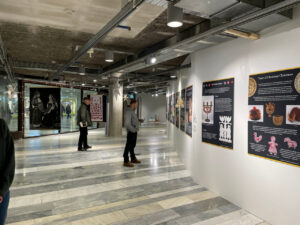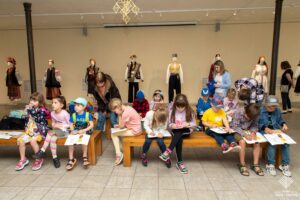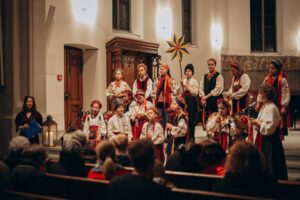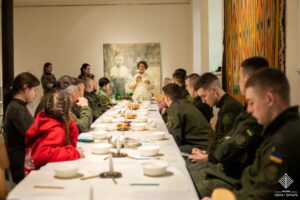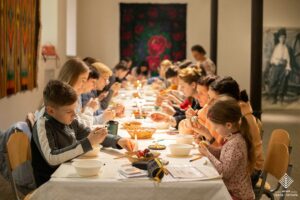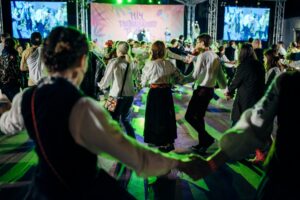
A battle to preserve Ukraine’s cultural identity
Ivan Honchar was a famous Ukrainian artist. During his many field expeditions to Ukrainian villages in the 1950s, he gathered a large collection of ethnographic materials and works of folk art, which surpassed the collections of many museums of the time. In 1959, he opened the first private museum in Ukraine, based in his own house in Kyiv. Visited by intellectual dissidents and high-ranking foreign guests, it came under the eye of the totalitarian Soviet authorities, who often persecuted and harassed the museum’s visitors. The artist didn’t give up, and with the independence of Ukraine, the process began in 1991 to turn the collection into a state museum, shortly before the artist’s death in 1993. In 2022, Russia’s invasion posed an immediate risk to the collections, but EU support from the House of Europe has helped to save this unique cultural heritage.
“Our cultural heritage has become a significant element in this war. On the one hand, it is for this heritage, history, and culture that we are fighting. On the other hand, in this fire a new Ukrainian identity is being formed, based on history and culture,” says Myroslava Vertiuk, Deputy Director for Intangible Cultural Heritage and Public Relations at the Ivan Honchar Museum in Kyiv.
She talks with pride about her museum, an important centre of folk culture in Ukraine. It currently houses over 27,000 objects – clothes, fabrics, ceramics, icons, Easter eggs, folk music instruments, archive photos, wood carvings, fine art and other items – representing Ukrainian folk culture from the 16th to the early 20th centuries. “Back in 1959 it started as a private ethnographic collection of the Ukrainian artist Ivan Honchar,” says Myroslava. The blurring borders between the nations in the USSR, the loss of their identity spurred the artist to gather artefacts, to record the culture and to convey to future generations the idea of Ukrainians as a distinct nation, with its own culture and lifestyle. His collection was a tool to bring this idea to life. In 1991, the collection was donated to the state and became a state museum.
“It is very important for us that, as a state museum, we preserve the trust of Ivan Honchar and the image of a public museum, open to society, that can develop the foundation as a state institution,” Myroslava insists.
With the aim of highlighting and preserving Ukrainian traditional culture, the Ivan Honchar Museum conducts ethnological research and field expeditions, organises scientific conferences, and cultural and artistic events such as Nights of Traditional Dance, the ‘Oreli’ Children’s Folklore Festival, and numerous fairs to promote traditional Ukrainian art and folk artists.
Since the pandemic, the museum has been closed for reconstruction. However, it continues to be in touch with the community. “Last year, we did a number of international projects and held several exhibitions abroad,” explains Myroslava. “We had photo exhibitions from the archives in Poland, Austria and Switzerland; we implemented song projects; we discovered various formats to showcase Ukrainian culture to foreigners and support the Ukrainian community abroad, which loses touch with its culture after being away for a long time. In 2023, there has been a strong demand for our activities inside Ukraine, and we’ve been working hard on the ground.”
The museum remains open for the community through its online resources: in 2021, the museum prepared and launched on its website an online exhibition which displays a part of its collection.
Rescuing a precious heritage
In February 2022, the war hit hard, striking not only the Ukrainian people but their culture and identity. Ever since, bombs and shelling have been a constant threat to the museum’s collections.
Though prohibited under international law, destroying the cultural heritage of a country as a weapon to undermine its people has long been a tactic of war. In 2017, the International Committee of the Red Cross declared that, “Attacking a country’s culture is to attack its humanity. Historic monuments, works of art and archaeological sites – known as cultural property – are protected by the rules of war.” Yet heritage has not been spared in this conflict: as of 10 January 2024, UNESCO has verified damage to 337 sites in Ukraine since 24 February 2022 – 126 religious sites, 148 buildings of historical and/or artistic interest, 30 museums, 19 monuments, 13 libraries, and 1 archive.
With Russian forces bearing down on Kyiv in the early days of the war, staff at the museum knew they had to act quickly, but the evacuation was challenging due to the lack of resources – both financial and human. “We had no packing materials, no boxes, no methodology, and not enough people with access to the collection to quickly start the process of packing and preparing for evacuation,”recalls the museum’s Deputy Director.“After the invasion started, we lost the scientific potential of the young people who moved abroad fleeing from the war, although before the war they had planned to work in the museum. They were part of our core team.”
Despite everything, the museum staff did not lose heart. “We quickly calculated what we needed exactly, the quantity and the types of boxes needed, but we knew that we could not cover the expenses ourselves.” says Myroslava. This spurred the staff to organise a fundraising campaign among the museum community, and in a very short time they managed to raise over a million UAH for the preservation of the collection items. The fundraising campaign helped to manufacture special fireproof boxes, to purchase packaging materials and to install video surveillance in the museum. In parallel to the fundraising campaign, the museum applied for EU financial support. The EU-funded House of Europe programme is investing in the Ukrainian culture and creative industries. After Russia’s invasion, it redirected financing to emergency support, part of which targeted the collections of 25 Ukrainian museums. The EU sub-grant allowed the Ivan Honchar museum to purchase part of the required boxes and crates.
Viktoriia Kutsuruk, the museum’s Head Conservator, remembers: “We had to decide whether to pack the collection for long-term safekeeping or for transportation to a different location. We had to choose between synthetic materials for transportation or organic materials for long-term storage. We considered different scenarios. It was important at that moment to receive the necessary professional equipment for the evacuation.”
Despite the challenging circumstances, the staff made extraordinary efforts, receiving an immediate response and support from the community. However, there is more work ahead. “There is no funding for one of the main areas – digitisation, but we feel a great need for it, especially during the war. We use sponsor funds, but we would like to have more sustained funding opportunities. Ukrainian heritage is facing very high risks now, so we should hasten to preserve it in digital formats to support Ukraine’s cultural voice in the world. Victory is possible through a joint effort, and cultural institutions have to make a significant contribution to it,” says Myroslava Vertiuk.
Author: Volha Prokharava
MOST READ
SEE ALSO

‘The Kremlin has entered the chat’: how to protect your personal data on Telegram and avoid the bait of propaganda
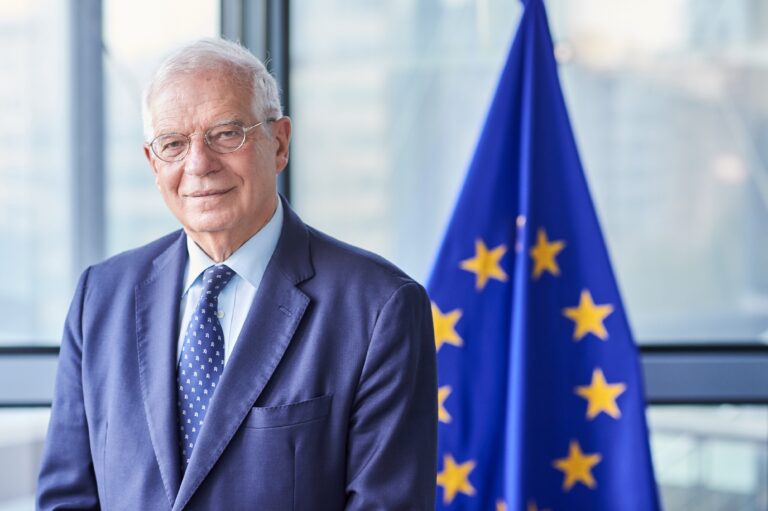
No, time is not on Russia‘s side

Socks for Peace: how the Vilni project is supporting internally displaced women in Ukraine
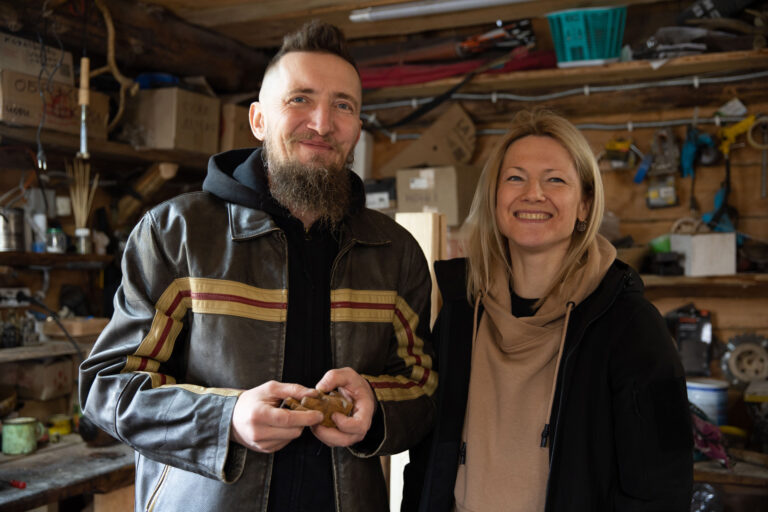
Celebrating traditional Ukrainian cultural identity in Rivne
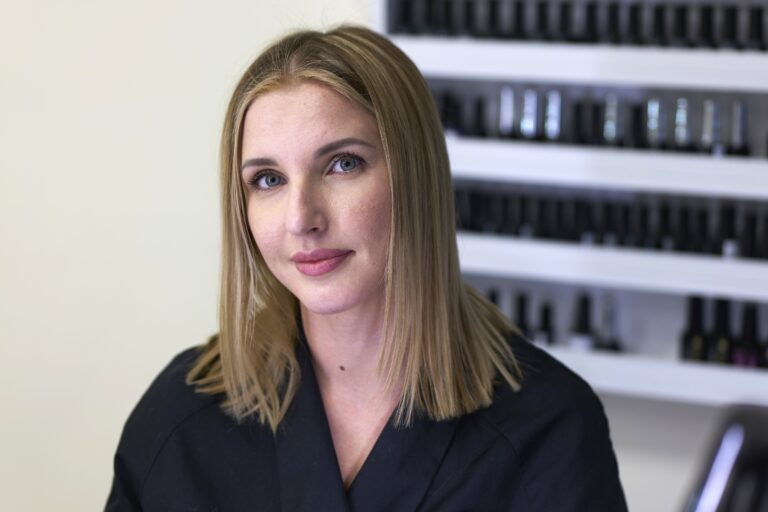
Natalia wanted her child to escape the war: how a single mother set up a successful business in Lithuania
More campaign pages:
Interested in the latest news and opportunities?
This website is managed by the EU-funded Regional Communication Programme for the Eastern Neighbourhood ('EU NEIGHBOURS east’), which complements and supports the communication of the Delegations of the European Union in the Eastern partner countries, and works under the guidance of the European Commission’s Directorate-General for Neighbourhood Policy and Enlargement Negotiations, and the European External Action Service. EU NEIGHBOURS east is implemented by a GOPA PACE-led consortium. It is part of the larger Neighbourhood Communication Programme (2020-2024) for the EU's Eastern and Southern Neighbourhood, which also includes 'EU NEIGHBOURS south’ project that runs the EU Neighbours portal.

The information on this site is subject to a Disclaimer and Protection of personal data. © European Union,
